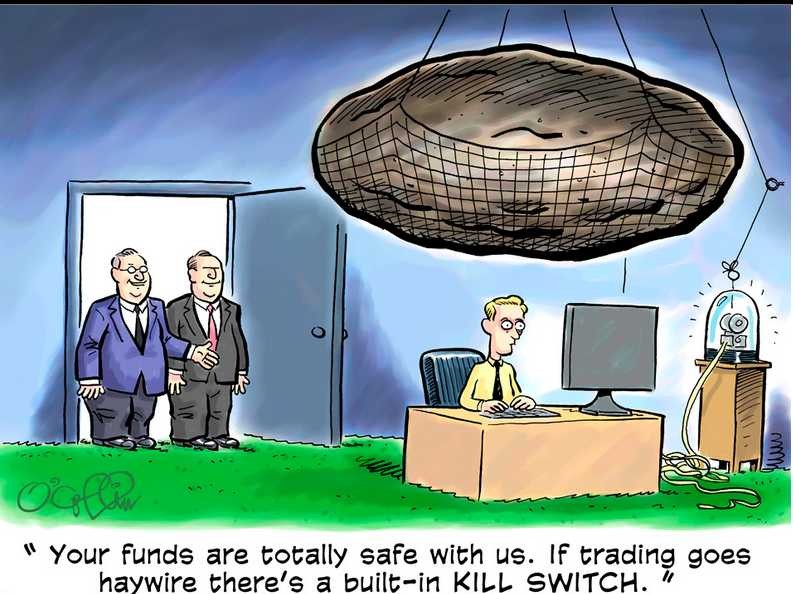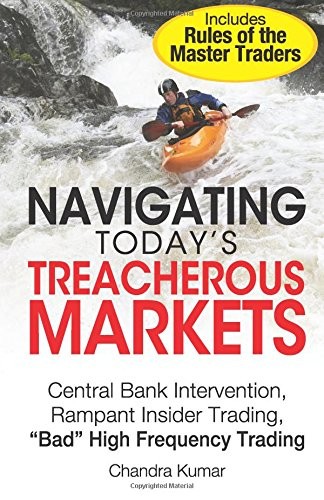High Frequency Or Insider Trading
Post on: 13 Июнь, 2015 No Comment

High Frequency? Or Insider Trading?
Dow Jones Industrial Average, May 9th 2010
Dow Intraday Trading May 9 th 2010
High frequency trading has reached a point in which its legality needs to be called in to question. These traders hurt markets and other investors while forcing large investors to move into dark pools. High frequency traders also have an unfair advantage when it comes to trading.
The above picture shows the most infamous trading crash caused by high frequency traders known to date. The Dow Jones Industrial average fell 600 points, and then continued to rise back up to its former levels fifteen minutes later. A drop like this is a clear sign of how unstable the markets can become when high frequency traders are in the mix of the markets.
Another scary incident caused by high frequency traders was the near collapse of Knight Capital. a major brokerage firm. In a matter of minutes a high frequency trading glitch caused the firm to lose approximately 400 million dollars. The collapse of a major firm like this would be awful for the markets; it would take away liquidity and stability. High frequency traders have caused flash crashes of both markets and firms on multiple occasions; they are clearly bad for the markets.
large investors have also been forced to invest in what are known as dark pools. Dark pools are barely regulated, adding to the temptation of insider trading and other illegal activities. The reason large investors are going to these dark pools is to be able to secretively make large orders that high frequency traders won’t be able to take advantage of. People used to be able to make large orders in normal markets, but now when trading, people need to chop up their orders in to smaller and smaller blocks to avoid being taken advantage of. This makes trading much harder on these investors and therefore trading is more difficult in the markets as a whole
The real problem with insider trading is the unfair advantage that they have. “These super computers allow such firms to make trades in a matter of microseconds and to shell out thousands of trades before a normal person could even blink their eyes” (McGowan 2). No person has any chance of competing with a high frequency trader simply due to the speed at which they trade. This advantage is similar to the one that insider traders have, and insider trading is completely illegal.
Insider traders us information not yet available to the public in order to make trades that they know will pay off for them. These supercomputers look for signals- such as the movement of interest rates, minuscule economic fluctuations, news and other subtleties- to take advantage of these indications before anyone else in the market is even aware of them (McGowan 3).Considering how fast high frequency traders are able to move and are capable of trading, them getting information even microseconds before the rest of the world is essentially equivalent to insider trading. High frequency traders have too much speed and access to information, they are able to gather information and make trades based off of it before most people even know what is going on.
Two men who run a small brokerage firm have been the most outspoken and well known advocates against the use of high frequency trading. These men are named Sal Arnuk and Joseph Saluzzi. and they have blogged, been on television, and written a book all speaking against insider trading. Many people value their opinions on this subject very highly and these two men do not say particularly positive things about high frequency traders:

They [Arnuk and Saluzzi] say firms that dominate the market often stop trading during times of crisis, when they are needed the most. They also contend that ordinary investors are paying more for their stocks, not less, because computerized traders pick up information about stock orders and push up prices before orders can be filled. Traders of all sorts have split orders into smaller and smaller blocks, making it harder for everyone to complete some types of basic trades. (Popper)
Statements like these are based off of Arnuk and Salluzzi’s experience on Wall Street. They experience first hand how high frequency traders hurt the economy and that is why they feel it is their responsibility to speak out against it and the problems that it has created.
It is clear that high frequency traders have a negative impact on the markets and hurt investors across the globe. They have created insecurity in the markets and make it scarier for everyone to invest. High frequency traders are very similar to insider traders who are illegal, and therefore high frequency traders should be illegal as well.
Works Cited
Green, Stuart P. Lying, Cheating, and Stealing: A Moral Theory of White-collar Crime. Oxford: Oxford UP, 2006. Print.
heinonline.org/HOL/Page?handle=hein.journals/dltr2010
Popper, Nathaniel. The Search for Speed Limit in High-Frequency Trading. New York Times 9 Sept. 2012: n. pag. Print.














